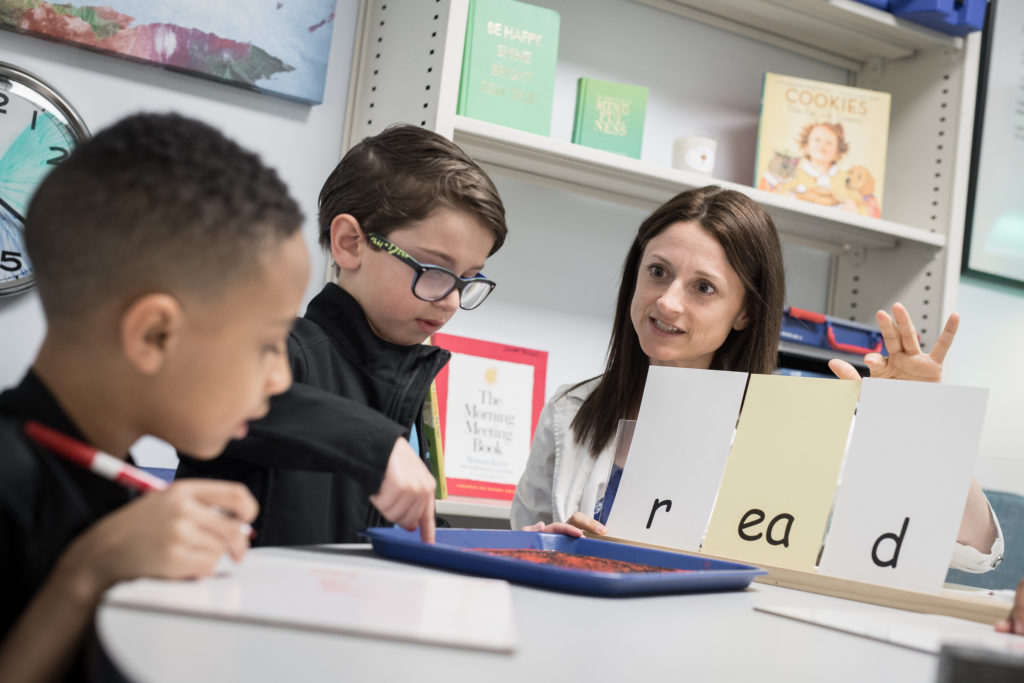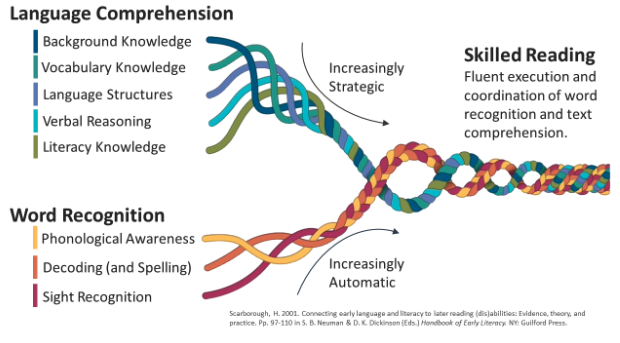Natalie Stapert, K-12 Master Reading Coordinator 2024
How Do Students Learn to Read?

In order to understand the journey from being an early reader to becoming an independent reader, we first need to understand all the different skills that are required for fluent reading. These many skills fall under two umbrellas–language comprehension and word recognition skills.
Language comprehension skills involve understanding what is heard or said. In order for students to have strong reading comprehension, they have to first have strong language comprehension. Beginning in kindergarten and all the way through middle and upper school, we have to help students build strong language comprehension. That includes building their background knowledge about the world, their vocabulary, their understanding of the structures of sentences and paragraphs, and their knowledge of the structures of different types of text.
Students also need to recognize words that are printed on a page, which we call word recognition skills. That involves the ability to hear the discrete sounds in words, known as phonological awareness. It also involves the ability to see letters and connect them to sounds, and known as decoding and spelling.
Once students are able to connect the sounds in spoken language to the letters on a page and decode words, students need practice transferring words that they have just learned and decoded into our long term memory. This way, when they see the word again, they recognize it instantly and do not need to do the work of decoding again. For example, the word McLean is one that many of our students know as a sight word. When they see McLean written, they know it without having to think of the five sounds in the word or recognizing what to say when they see “ea.” Sight recognition is the area where people with dyslexia struggle. They have trouble recognizing words that they have seen before, and their reading is slowed down because they have to decode so many more words than other readers.
We teach our young readers each of the skills in language comprehension and word recognition separately. For example, teachers design activities that just help students hear the sounds in words, or to learn to decode words with the vowel team “ai,” or transfer new words into their sight recognition bank. There are activities that just build background knowledge about the pyramids in Egypt or vocabulary around character traits. Language comprehension and word recognition skills are new to our young readers and they can only do one new difficult thing at a time.
As students get older, become more skilled, and are more mature and independent, we start to weave these skills together so that one lesson might reinforce and extend several of these skills simultaneously. Ultimately, when students are completely independent, they are doing all of these things fluently, naturally, and on their own.
In 2001, Dr. Hollis Scarborough created the Reading Rope (image below) to explain how the different “strands” of reading are all interconnected and woven together, but in fact, are independent of one another. The Reading Rope illustrates the complexity of learning to read, because only when all of the components of reading are intertwined in a skilled and accurate way, do readers become fluent with strong comprehension.

For students with learning challenges, school can be a daunting place. There’s something truly special when a student is seen for who they are and teachers are able to step outside of prescribed and standardized curriculum. At McLean School, we understand how students learn to read. Learn more today.